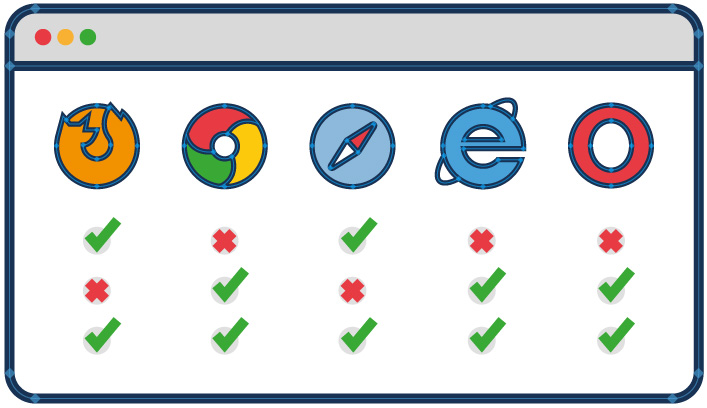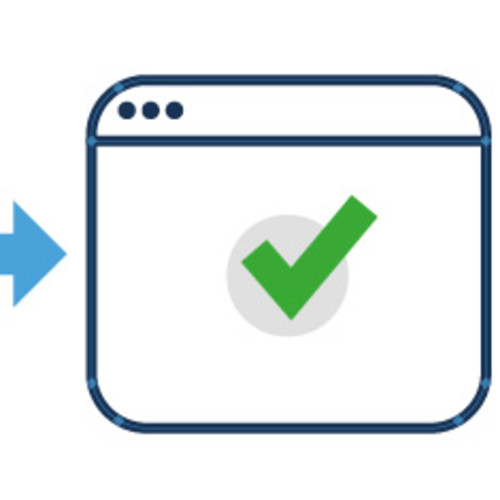A Developer’s Checklist for Launching Websites
Your new site is almost ready! We can understand you will probably be bursting at the seams to share it with everyone you know! But before you hit that “share” button on Facebook, you need to make sure you are 100% ready to go.
From browser testing to HTML validation, there are many areas to double, and then triple check before a website can officially ‘go live.’ Don’t be hasty - consult our developer’s checklist for launching sites before the big launch!
Configuration and Set Up
Checking your site’s configuration and the set up of several key items should be your first port of call. These are basic building blocks - and if you overlook them, then you may end up without analytical data or an awful lot of unhappy users landing on broken pages.
Analytics
Whether you’re using a traditional tracking snippet or a tag management system, it’s important to make sure that your tracking is in working order. Broken tracking can be detrimental for your marketing team - imagine launching a brand new site without any idea of how it has performed in the first few days!

We always recommend using the tag management tool, Google Tag Manager. As a tool, it empowers and gives marketers more independence when it comes to more setting up more advanced tracking like click events on a website. When it comes to getting ready for your site launch, GTM has a very handy inbuilt “preview” tool that allows you to see your tags firing in real time (handy for practicing on a staging site) and spot any problems before it damages your data.
SSL Certificate
If your website uses login or card payment details, then we would always recommend adding an SSL certificate to your site. In fact, an SSL is the bare-minimum requirement for any personal information in-transit.
By adding an SSL(Secure Sockets Layer) to your website, it provides an extra layer of security for your users. When an SSL is applied to a site the data that is passed between the server and the browser is encrypted - this makes it more secure than if that data is not encrypted.

Some browsers look unfavourably upon sites that don’t have SSLs - such as Google Chrome, which actually displays a “Not Secure” warning in the URL bar of sites missing one. Consider if this is the sort of message you want a customer to come across upon their first, fourth or even tenth visit!
Redirects (rewrite rules)
Do you have an existing version of your website? If so, a list of redirects have to be implemented onto your new website. A redirect will send users to the same (or closest version) of that page they are visiting on the new website from the old website.
Why do you need to do this?
There are multiple reasons for why you should redirect old URLs from your site. The first being - if a user has a page bookmarked, or the page is indexed on a search engine, then users who click through this way may otherwise end up on a broken page. Asides from ensuring that it helps search engines understand your new site better when it launches, it also ensures that users aren’t disappointed or frustrated like they would be if they landed on a broken page.
Ensuring you redirect everything on your website correctly requires working closely with your digital marketing department who are able to crawl your old website and map out the corresponding or closest page on your new website.
Browser Testing
Don’t forget to check that your website works across different browsers! The way a website is displayed can vary from browser to browser. If your user prefers to view your website through specific browser and your site doesn’t display right, the likelihood that they will ‘give up’ and go to a competitor will increase considerably.
Browsers we always check before launching a new website include:
- Chrome (desktop and mobile)
- Safari (desktop and iPhone/iPad)
- Firefox
- Microsoft Edge
- Internet Explorer 11

You’ll also have to consider your users that are “on-the-go.” Mobile and tablet browsing now accounts for more than 51.3% of all traffic according to surveys conducted by StatCounter. There’s also the launch of the mobile index by Google on its way, so making sure your website is optimised for mobile users will not only improve your users’ experience but also help you to perform more favourably within the Search Engine Results Pages.
Functionality
Next up, to make sure that your users can complete tasks on site! If your website uses forms and newsletters, it is essential to check that these work before deploying a site. This refers to the:
- Subscribe/unsubscribe features on newsletters
- Required fields on forms
- Login/logout process
- Shop/checkout process
- Any other custom functionality on your website
With the new GDPR regulations set to come into effect in May 2018, how some areas of functionality on your site may also be set to change. It’s important to ensure that your site is compliant before hitting publish. Failure to do so could result in a nasty outcome further down the line.

Beyond legal compliance, there are also other areas to consider for the benefit of user experience when it comes to the functionality of your website:
- Is pagination working across the site?
- Is there limited access to secure areas?
- Is the forgotten password reminder working?
Getting the functionality right isn’t something that can be skimped on. Make sure to spend the time necessary testing and tweaking to get your site just right.
Content
Content has a huge role to play in the success of your website. From copy to imagery to video content, checking your content pre site launch goes a bit further than a quick proof read.

Including essential information
Is your content displaying the way you want it to? Do you have all of the information you need to be included on your website? Company contact details and opening/closing times? We always hear the phrase ‘content is king’ so spending that little bit of extra time checking that you have all of the content that your users may require to make a conversion on your site will pay dividends.
Be careful of going “writer blind” - get your colleagues or friends to review the content - they may spot something you’ve missed, like a typo or a broken image!
Broken Links
Not checking for broken links before publishing is one of the areas that can easily impact how your site performs. If a user is searching for a specific item, article or feature that they know to exist from a previous site visit, what will their reaction be when they land on a broken page? Frustration is the most likely answer.
Although you shouldn’t have really any broken links if you create an in-depth 301 redirect map, it is possible to miss the odd link or two. Make sure you have a contingency in place and things like site search, 404 pages and the like are all properly working so that if the worst does happen, your user has options that don’t involve going off-site.
e-Commerce
If you have a website that users can purchase from, it’s important to carry out ‘dummy’ test transactions to make sure that when you go live, users can purchase straight away. Remember to test all types of possible transaction that could occur on your website, such as:
- Successful
- Unsuccessful or Rejected
- Refunds
With surveys showing that 68% of internet users bought something online in 2017, it is vital that the user experience from the start is a good one. Impressions last - and an e-commerce site that you can’t buy from isn’t going to make the right kind of impact.

The way that a user is able to purchase something online can have an impact on their overall perception of your brand and whether or not they choose to visit your website again.
Preparing for your site launch
It really does pay to prepare for your site launch! Testing helps to prevent any headaches down the line - once your website is out on the World Wide Web, implementing any fixes that could have easily been sorted before are likely to create a lot of unnecessary stress. Plus, failure to test properly ahead of your site launch could negatively impact your users - the complete opposite of what you’re trying to achieve with your new site.
Still don’t feel ready to go live, or think you may be missing some essential components to your site after reading our developer’s checklist for launching websites? We’re here to help. Get in touch today!